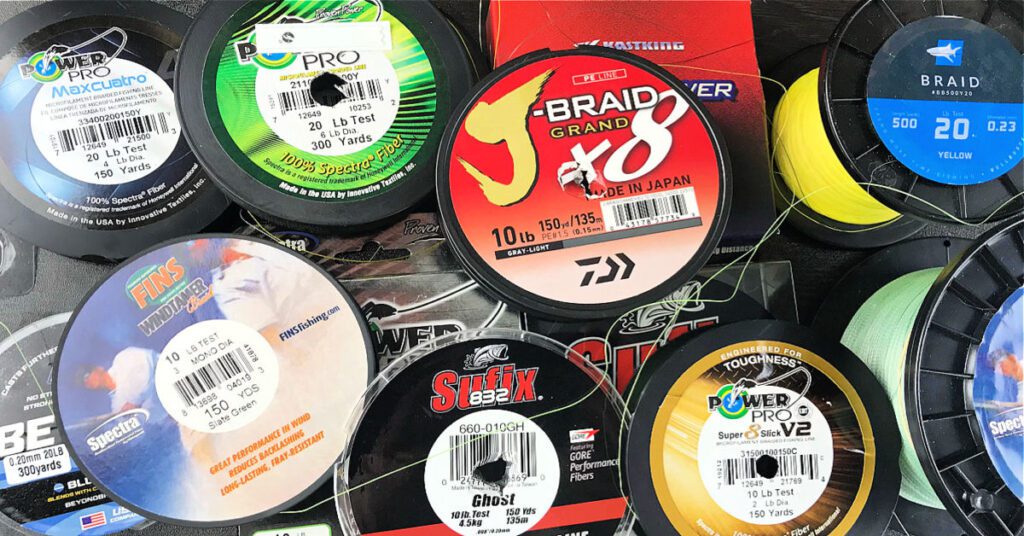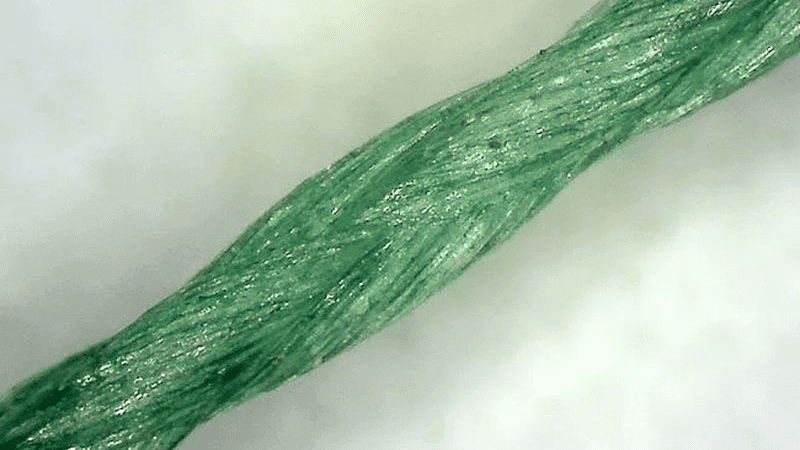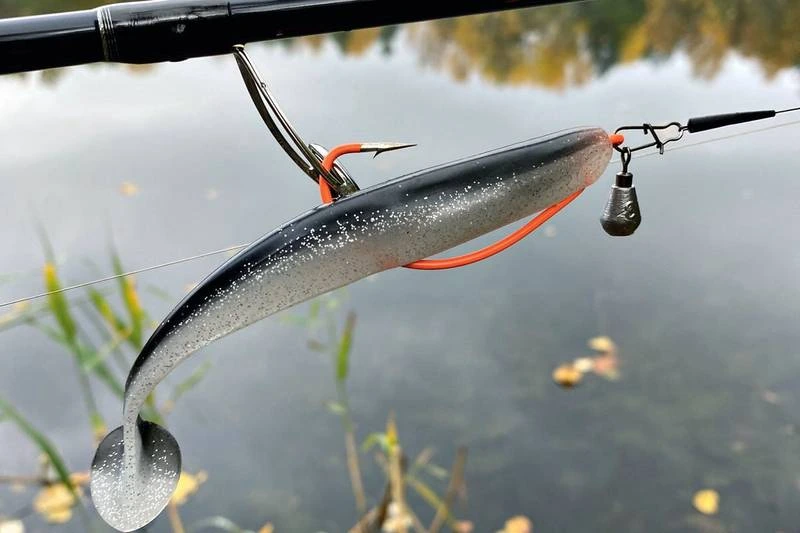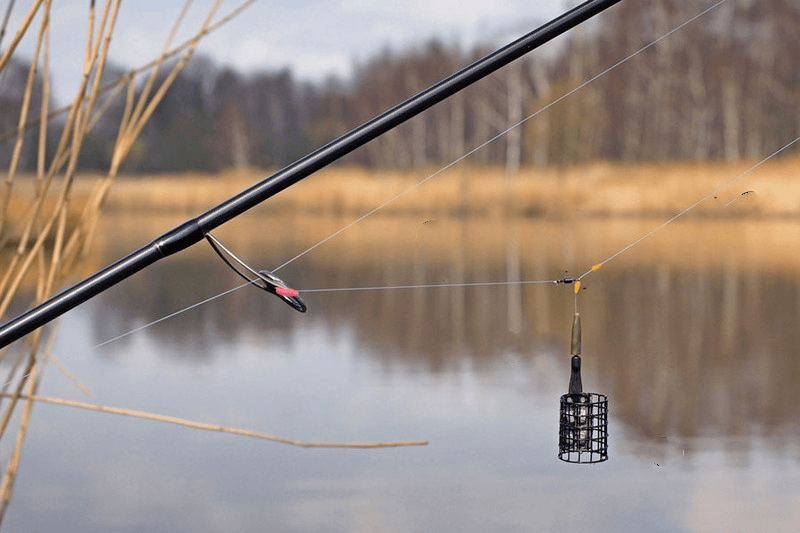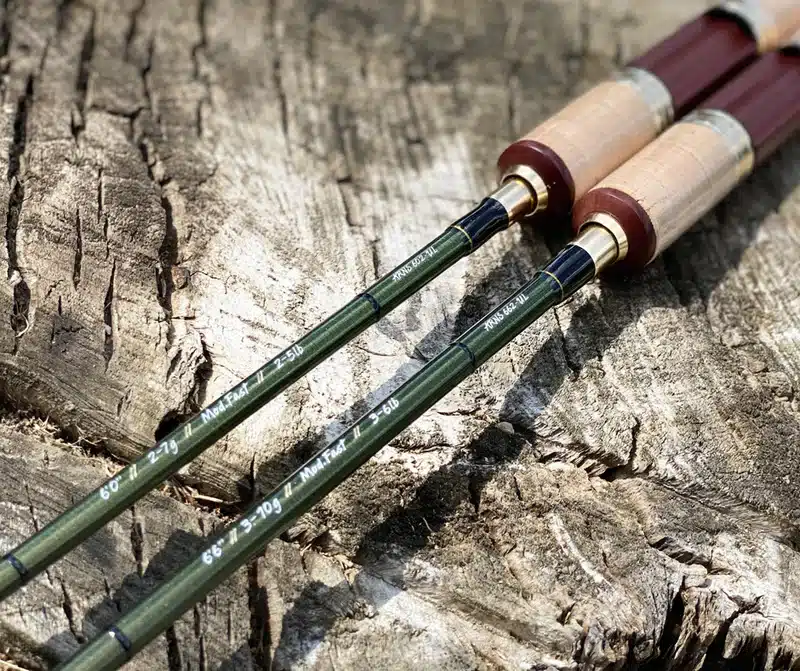Pintas valas (braided fishing line) yra viena iš daugelio valo rūšių. Pintas valas susideda iš dešimčių atskirų sintetinių pluoštų, supintų į siūlus kurie dar yra supinti kartu. Šiam momentui pintas valas dažniausiai sudarytas iš 4 ir 8 gyslų. Pinto valo gyslos gali būti tiesiog susuktos tarpusavyje arba gali būti sudėtingesnio pynimo.
Pinto valo diametras
Pinto valo skersmuo yra labai svarbus parametras, turintis didelę įtaką masalo užmetimo atstumui. Valas turi kelių sruogų struktūrą, susidedančią iš daugybės atskirų pluoštų, todėl tiksliai išmatuoti pinto valo skersmenį yra labai sunku. Valo skersmenį gamintojas nurodo ant jo pakuotės. Deja, ant pakuotės nurodytas skersmuo labai dažnai gerokai skiriasi nuo tikrojo. Ar gamintojo nurodytas nominalus valo skersmuo atitinka tikrąjį skersmenį, galite patikrinti namuose naudodami mikrometrą.
Japonijos gamintojai nurodo valo skersmenį savo numeravimo sistemoje simboliu (#) ir skaičiumi po jo (#1, #1,2, #2). Standartas yra #1, kurio skersmuo yra 0,165 mm.
| Japoniška numeracija, # | Tarptautinė numeracija, mm |
|---|---|
| 0.1 | 0,052 |
| 0.125 | 0,058 |
| 0.15 | 0,064 |
| 0.2 | 0,074 |
| 0.25 | 0,083 |
| 0.3 | 0,090 |
| 0.4 | 0,104 |
| 0.5 | 0,117 |
| 0.6 | 0,128 |
| 0.7 | 0,138 |
| 0.75 | 0,143 |
| 0.8 | 0,148 |
| 0.9 | 0,157 |
| 1 | 0,165 |
| 1.15 | 0,177 |
| 1.2 | 0,181 |
| 1.25 | 0,184 |
| 1.35 | 0,192 |
| 1.4 | 0,195 |
| 1.5 | 0,202 |
| 1.6 | 0,209 |
| 1.7 | 0,215 |
| 1.75 | 0,218 |
| 1.8 | 0,221 |
| 2 | 0,233 |
| 2.2 | 0,245 |
| 2.25 | 0,248 |
| 2.4 | 0,256 |
| 2.5 | 0,261 |
| 2.75 | 0,274 |
| 2.8 | 0,276 |
| 3 | 0,286 |
| 3.25 | 0,297 |
| 3.75 | 0,320 |
| 4 | 0,330 |
| 4.25 | 0,340 |
| 4.5 | 0,350 |
| 4.75 | 0,360 |
| 5 | 0,369 |
| 5.25 | 0,378 |
| 5.5 | 0,387 |
| 6 | 0,404 |
| 7 | 0,437 |
| 7.5 | 0,452 |
| 8 | 0,467 |
| 9 | 0,495 |
| 10 | 0,522 |
| 12 | 0,572 |
| 13 | 0,595 |
| 14 | 0,617 |
| 15 | 0,639 |
| 16 | 0,660 |
| 17 | 0,680 |
| 18 | 0,700 |
| 20 | 0,738 |
| 22 | 0,774 |
| 23 | 0,791 |
| 24 | 0,808 |
| 26 | 0,841 |
| 27 | 0,857 |
| 28 | 0,873 |
| 29 | 0,889 |
| 30 | 0,904 |
| 33 | 0,948 |
| 35 | 0,976 |
| 36 | 0,990 |
| 40 | 1,044 |
| 45 | 1,107 |
Pinto valo apkrova
Pinto valo apkrova yra vienas svarbiausių parametrų renkantis pintą valą. Valo trūkimo stipris gali būti nurodytas kg arba svarais (lb). Vienas anglų svaras yra lygus 453,6 gramo. Norėdami greitai konvertuoti svarus (lb) į kilogramus, tiesiog padauginkite lūžio apkrovą svarais (lb) iš 2,2.
Gamintojo nurodyta pinto valo trūkimo apkrova dažnai yra pervertinama, ypač mažai žinomiems gamintojams. Valo trūkimo apkrovą galite išmatuoti patys namuose. Norėdami išmatuoti tikrąją trūkimo apkrovą, turėtumėte paimti apie 1 metro ilgio pinto valo gabalą. Vienas valo galas pririšamas prie tvirtos vietos, o prie kito galo pririšamas gamintojo nurodytas svoris. Jei valas nenutrūksta per 1 minutę, tada gamintojo nurodyta apkrova atitinka tikrąją.
Renkantis pintą valą reikėtų atsiminti, kad trūkimo apkrova turi atitikti ne sugautos žuvies svorį, o jėgą, kurią ji sukuria. Labai sunku apskaičiuoti šią jėgą, todėl valas visada turėtų turėti tam tikrą apsaugos ribą.
| LB | Kg |
|---|---|
| 0,8 | 0,36 |
| 1 | 0,45 |
| 2 | 0,91 |
| 3 | 1,36 |
| 4 | 1,81 |
| 6 | 2,72 |
| 7 | 3,18 |
| 8 | 3,63 |
| 10 | 4,54 |
| 12 | 5,44 |
| 14 | 6,35 |
| 15 | 6,8 |
| 16 | 7,26 |
| 20 | 9,07 |
| 25 | 11,34 |
| 30 | 13,61 |
| 35 | 15,88 |
| 40 | 18,14 |
| 50 | 22,68 |
| 60 | 27,22 |
| 70 | 31,75 |
| 80 | 36,29 |
| 90 | 40,82 |
| 95 | 43,09 |
| 100 | 45,36 |
| 110 | 49,9 |
| 120 | 54,43 |
| 140 | 63,5 |
Pinto valo forma
Pintas valas gali turėti įvairių pynimo formų:
- Apvalus pynimas – apvalios formos pintas valas lengvai ir taisyklingai suvyniojamas ant ritės, turi mažą vingiavimą ir yra mažiau veikiamas trinties meškerės žieduose.
- Plokščias pynimas – turi didelį vingiavimą užmetant, turi didesnį poveikį trinčiai žieduose ir ne taip gerai vyniojasi ant ritės būgno.
Renkantis pintą valą, reikėtų atkreiptį dėmesį, kad valas būtu kuo arčiau apvalesnės formos. Jeigu plika akimi matosi, kad valas plokščias, tokio rinktis nevertėtų.
Pintas valas – kiek rinktis gijų
Pintas valas susideda iš kelių gijų, kurių kiekviena susideda iš kelių dešimčių atskirų pluoštų. Pluoštų skaičius vienoje gijoje gali būti nuo 3 iki 16. Šiuo metu dažniausiai pinti valai yra 4 ir 8 gyslų.
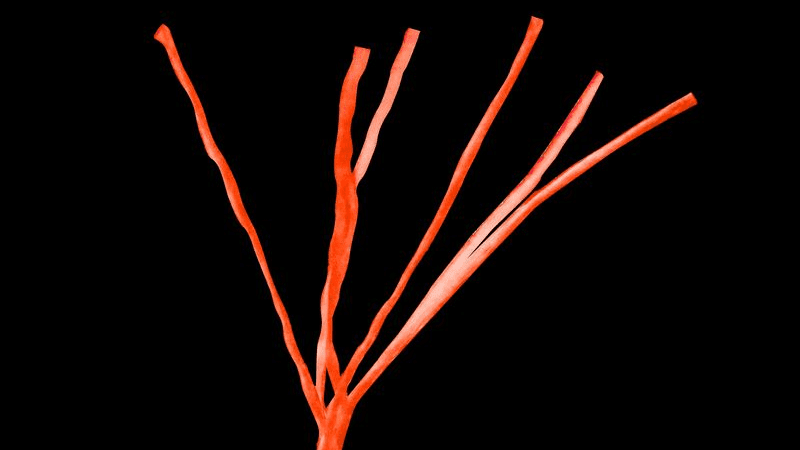
Pintas valas iš 4 gyslų yra paprastesnis, pigesnis, ilgaamžiškesnis, tačiau tuo pačiu toli gražu nėra idealios apvalios formos, todėl turi prastesnį užmetimo atstumą ir kelia didesnį triukšmą vyniojant valą ant ritės.
Pintas valas iš 8 gyslų yra apvalesnės formos, todėl užtikrina didesnį užmėtimo atstumą, tačiau yra mažiau atsparus pažeidimams.
Pinto valo atsparumas
Pintas valas skiriasi savo atsparumu dilimui. Atsparumas dilimui lemia, kaip jis reaguoja į sąlytį su įvairiomis po vandeniu randamomis medžiagomis: kriauklėmis, akmenimis, smėliu, povandeninėmis šiukšlėmis. Patvariausias yra 4 gyslų pintas valas. Mažiau patvarus 8 gyslų. Jeigu žinote, kad vietoje kur žvejojate yra daug akmenukų, kriauklių naudokite ilgesnį pavadėlį kuris yra atsparesnis.
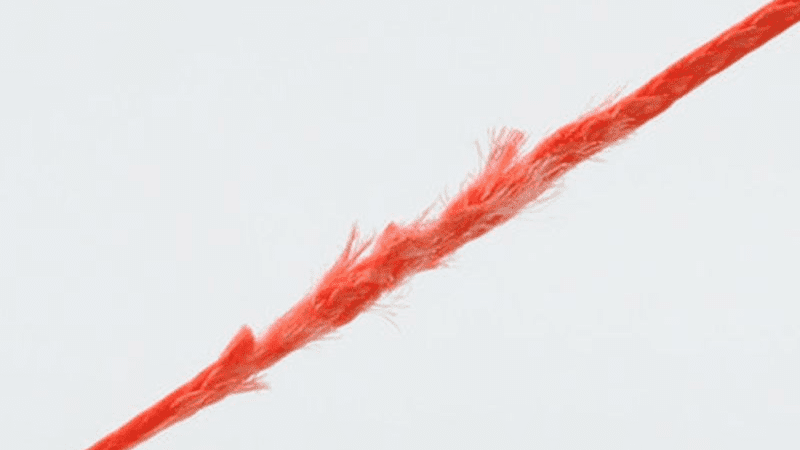
Pinto valo spalva
Pinto valo spalvas galima suskirstyti į kelias pagrindines grupes:
- Tamsios, kamufliažinės spalvos padaro valą mažiau pastebimą. Kamufliažinėms spalvoms priskiriamos šios spalvos: tamsiai žalia, juodas ir mėlynos spalvos.
- Ryškios spalvos leidžia kontroliuoti masalo užmetimą ir judėjimo kryptį vyniojant. Ryškių spalvų pinti valai naudojami žvejojant jigu, twichingu ir kitais žvejybos būdais, kai norite kontroliuoti masalo padėtį ir matyti vizualinį kibimą. Ryškios spalvos: geltona, ryškiai žalia, raudona ir oranžinė.
- Daugiaspalvis valas – valas dažytas skirtingu skaičiumi kontrastingų spalvų lygiais atstumais kiekvienai spalvai. Toks valas leidžia tiksliai nustatyti užmetimo atstumą.
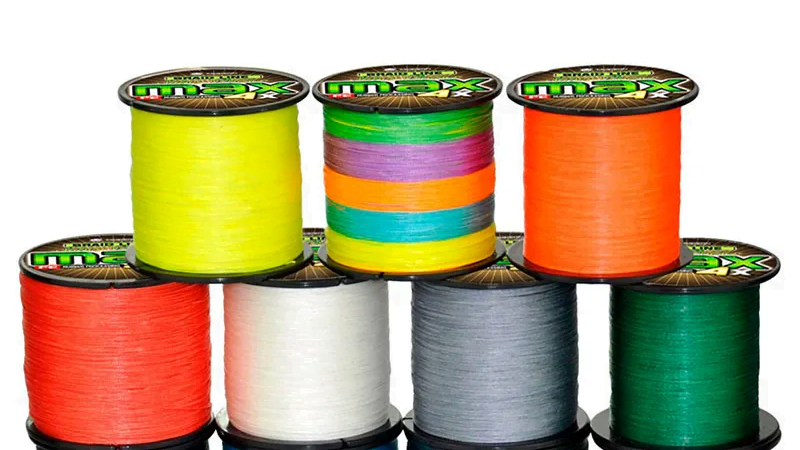
Pinto valo privalumai
Pintas valas turi keletą reikšmingų pranašumų:
- Stiprumas – pintas valas turi puikų trūkimo, apkrovos ir valo skersmens santykį. Didelis gyslų tvirtumas leidžia žvejybai naudoti plonesnį valą, kuris užtikrina didesnį užmetimo atstumą.
- Minimalus tamprumas – pintas valas turi mažiau tamprumo, lyginant su monofilamentiniais ir fluorokarbono valais. Pinto valo tamprumas yra 2-4% o monofilamentinių ir fluorokarboninių linijų 23-30%. Minimalus tamprumas suteikia įrankiui didelį jautrumą, dėl elastingumo neturėjimo pintas valas labai aiškiai perteikia masalo kontaktą su dugnu ar kliūtimi ir leidžia meškeriotojui pajusti net ir silpniausią žuvies prisilietimą prie masalo.
- Neturi atminties efekto – pintas valas eksploatacijos metu nekeičia savo formos ir nesusisuka į žiedus.
Pinto valo trūkumai
- Mažas atsparumas – žvejojant ant kieto dugno, pinto valo darbinė dalis greitai ima šerpetoti ir po kurio laiko nutrūksta. Žvejybai tokiomis sąlygomis naudojant pintą valą, rekomenduojama periodiškai tikrinti pinto valo darbinę dalį arba prisirišti pavadėlį iš monofilamentinio ar fluorokarboninio valo.
- Didesnis matomumas vandenyje – pintas valas yra daug geriau matomas vandenyje, lyginant su monofilamentiniu ar fluorokarboniniu valu.
- Šiukšlių surinkimas – pintas valas lengvai surenka nešvarumus, purvą, dumblius, kurie vėliau patenka ant žiedų ir ritės.
- Užšalimas žiemą – pintas valas stipriai sugeria vandenį, kuris žvejojant žiemą virsta ledu, o valas pradeda stingti, painiotis ir įstrigti žieduose.
- Mažas tamprumas – dėl mažo tamprumo pintas valas nesugeria stambių žuvų smūgius. Todėl reikia reguliuoti ritės stabdį.
- Didesnės gamybos sąnaudos – dėl sudėtingesnio gamybos proceso, pintas valas yra žymiai brangesnis nei monofilamentinis valas.
